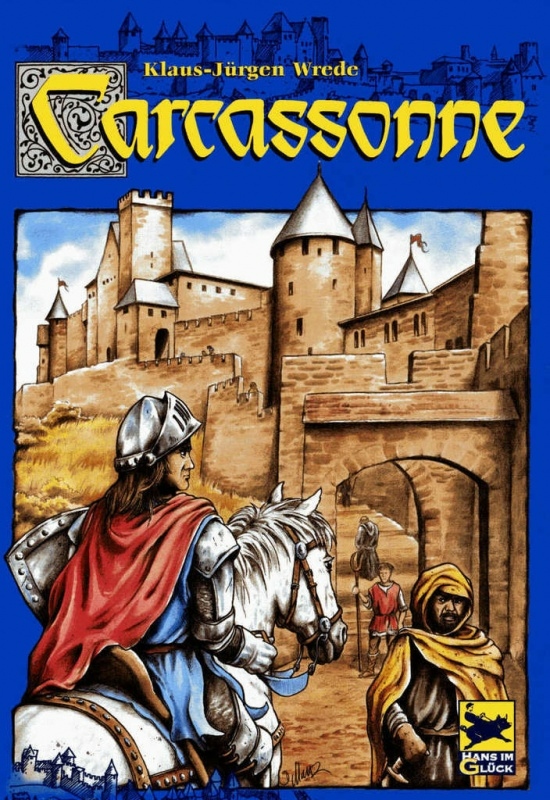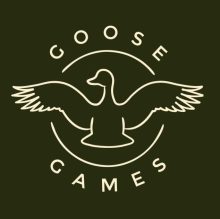
Carcassonne is a tile placement game first published in 2000 in which the players draw and place a tile with a piece of southern French landscape represented on it. The tile might feature a city, a road, a cloister, grassland or some combination thereof, and it must be placed adjacent to tiles that have already been played, in such a way that cities are connected to cities, roads to roads, et cetera. Having placed a tile, the player can then decide to place one of their meeples in one of the areas on it: in the city as a knight, on the road as a robber, in the cloister as a monk, or in the field as a farmer. When that area is complete that meeple scores points for its owner.
During a game of Carcassonne, players are faced with decisions like: “Is it really worth putting my last meeple there?” or “Should I use this tile to expand my city, or should I place it near my opponent instead, thus making it a harder for them to complete it and score points?” Since players place only one tile and have the option to place one meeple on it, turns proceed quickly even if it is a game full of options and possibilities.
The common board game term “meeple” originated from the game Carcassonne. The game’s publisher, Hans im Glück, used the German word “Männchen,” meaning “little men,” to describe these wooden figures. But the English term “meeple” was coined in November 2000 by Alison Hansel, a gamer who fused “my” and “people” to describe the wooden figures used in the game Carcassonne The term stuck and has since become a widely recognized and affectionate term within the board gaming community to refer to the small game pieces used to represent players’ characters or units.
Players : 2-5
Time : 30-45 minutes
Weight/Complexity : 1.89/5
Rating : 7.4/10
Awards and Recognition
- 2025 BoardGameGeek Hall of Fame Inductee
- 2012 Ludo Award Best Board Game Editor’s Choice Winner
- 2011 Jocul Anului în România Best Game in Romanian Finalist
- 2004 Vuoden Peli Family Game of the Year Winner
- 2004 Vuoden Peli Family Game of the Year Nominee
- 2004 Hra roku Nominee
- 2002 Årets Spel Best Family Game Winner
- 2001 Spiel des Jahres Winner
- 2001 Spiel des Jahres Nominee
- 2001 Spiel der Spiele Hit mit Freunden Recommended
- 2001 Nederlandse Spellenprijs Nominee
- 2001 International Gamers Awards – General Strategy; Multi-player Nominee
- 2001 Deutscher Spiele Preis Best Family/Adult Game Winner
- 2000 Meeples Choice Award Winner
- 2000 Meeples Choice Award Nominee
